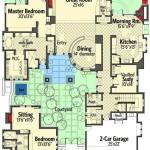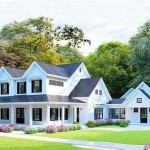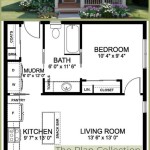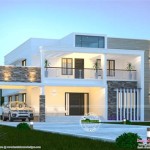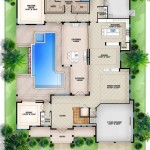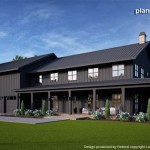Contemporary House Design Plans are architectural blueprints that guide the construction and design of modern, up-to-date houses. They incorporate the latest trends in architecture and design, such as open floor plans, natural materials, and energy efficiency. For instance, a contemporary house design plan may feature a spacious living area with high ceilings, large windows that allow for ample natural light, and an outdoor living space seamlessly connected to the interior.
These plans offer a range of benefits, including functionality, aesthetics, and sustainability. They are meticulously crafted to create spaces that are not only visually appealing but also practical and comfortable to live in. Additionally, contemporary house design plans prioritize eco-friendly features, ensuring that the homes they inspire are energy-efficient and contribute to a greener environment.
In the following sections, we will explore the key characteristics of contemporary house design plans, discuss the advantages they offer, and provide insights into the process of selecting and working with a design plan.
Important Considerations for Contemporary House Design Plans:
- Open floor plans
- Natural materials
- Energy efficiency
- Smart home technology
- Indoor-outdoor living
- Customizable designs
- Sustainable features
- Functionality and comfort
- Aesthetic appeal
- Professional expertise
By incorporating these elements into your design plan, you can create a contemporary house that meets your unique needs and reflects your personal style.
Open floor plans
Open floor plans are a defining characteristic of contemporary house design. They create a spacious and airy feel by eliminating walls and partitions between the living room, dining room, and kitchen. This open concept allows for a seamless flow of light and movement throughout the living space.
There are several advantages to open floor plans. First, they promote a sense of community and togetherness, making them ideal for families and social gatherings. Second, they maximize natural light, creating a brighter and more inviting living space. Third, open floor plans are more flexible and adaptable, allowing you to easily reconfigure the space to suit your changing needs.
However, it’s important to note that open floor plans also have some drawbacks. For example, they can be more challenging to heat and cool efficiently. Additionally, they may not provide as much privacy as traditional floor plans. Carefully consider your lifestyle and needs before opting for an open floor plan.
If you’re considering an open floor plan for your contemporary house, there are a few things to keep in mind. First, it’s important to define the different areas of the space using furniture, area rugs, and lighting. This will help to create a sense of order and purpose. Second, pay attention to the flow of traffic and make sure that there are clear pathways throughout the space. Finally, be sure to incorporate plenty of natural light and ventilation to create a comfortable and inviting living environment.
Natural materials
Natural materials are another key element of contemporary house design plans. They bring a sense of warmth, authenticity, and connection to the outdoors. Commonly used natural materials include wood, stone, brick, and glass.
- Wood: Wood is a versatile and sustainable material that can be used for a variety of purposes, including flooring, cabinetry, and siding. It adds a touch of warmth and elegance to any space.
- Stone: Stone is a durable and timeless material that can be used for countertops, flooring, and exterior cladding. It adds a sense of solidity and sophistication to any home.
- Brick: Brick is a classic building material that can be used for both interior and exterior walls. It is strong, durable, and fire-resistant, and it adds a touch of character to any home.
- Glass: Glass is a versatile material that can be used for windows, doors, and skylights. It allows for natural light to flood into the home, creating a bright and airy living space.
Incorporating natural materials into your contemporary house design plan can help to create a home that is both stylish and sustainable. These materials are durable, beautiful, and environmentally friendly, making them a great choice for any homeowner.
Energy efficiency
Energy efficiency is a top priority in contemporary house design plans. By incorporating energy-efficient features into your home, you can reduce your energy consumption, lower your utility bills, and help to protect the environment.
- Insulation: Proper insulation is essential for energy efficiency. It helps to keep your home warm in the winter and cool in the summer, reducing the amount of energy needed to heat and cool your home.
- Windows and doors: Energy-efficient windows and doors are designed to minimize heat loss and gain. They feature double or triple glazing, low-emissivity coatings, and tight seals to keep your home comfortable and energy-efficient.
- Appliances: Energy-efficient appliances use less energy to operate, saving you money on your utility bills. Look for appliances with the ENERGY STAR label to ensure that you are choosing the most energy-efficient models.
- Lighting: Energy-efficient lighting can significantly reduce your energy consumption. Use LED or CFL bulbs, which use less energy and last longer than traditional incandescent bulbs.
By incorporating these energy-efficient features into your contemporary house design plan, you can create a home that is not only stylish and comfortable, but also sustainable and energy-efficient.
Smart home technology
Smart home technology is another key element of contemporary house design plans. It allows you to control and automate a variety of devices and systems in your home, from lighting and temperature to security and entertainment.
- Control and automation: Smart home technology gives you the ability to control and automate a variety of devices and systems in your home using your smartphone, tablet, or voice assistant. This includes everything from turning on the lights and adjusting the thermostat to locking the doors and setting the security alarm.
- Convenience: Smart home technology can make your life more convenient and comfortable. For example, you can use it to create routines that automatically turn on the lights when you come home or adjust the temperature when you go to bed.
- Energy efficiency: Smart home technology can help you to save energy and money. For example, you can use it to schedule your thermostat to automatically lower the temperature when you’re away from home or to turn off the lights when you leave a room.
- Security: Smart home technology can help to improve the security of your home. For example, you can use it to install a security system that sends you alerts if there is a break-in or to monitor your home remotely using security cameras.
By incorporating smart home technology into your contemporary house design plan, you can create a home that is not only stylish and comfortable, but also safe, convenient, and energy-efficient.
Indoor-outdoor living
Indoor-outdoor living is a key feature of contemporary house design plans. It involves creating a seamless connection between the interior and exterior spaces of your home, allowing you to enjoy the best of both worlds.
There are many ways to incorporate indoor-outdoor living into your home design. One popular method is to use large windows and doors that open up to a patio, deck, or garden. This creates a visual and physical connection between the inside and outside of your home, making it easy to transition between the two spaces.
Another way to achieve indoor-outdoor living is to use outdoor materials and finishes inside your home. For example, you could use stone or brick flooring in your living room or kitchen, or use wood beams and columns to create a rustic and inviting atmosphere. By bringing the outdoors in, you can create a more natural and organic living space.
Indoor-outdoor living also extends to the way you use your outdoor space. By creating comfortable and inviting outdoor living areas, you can extend your living space beyond the walls of your home. This could include adding a fire pit, outdoor kitchen, or seating area to your patio or deck. By making your outdoor space more livable, you can enjoy the fresh air and sunshine without having to leave the comfort of your home.
There are many benefits to incorporating indoor-outdoor living into your contemporary house design plan. It can help to:
- Increase your living space
- Create a more natural and organic living environment
- Improve your indoor air quality
- Reduce stress and improve your mood
- Entertain guests and host parties more easily
If you’re looking to create a more modern and inviting home, consider incorporating indoor-outdoor living into your design plan.
Customizable designs
One of the key advantages of contemporary house design plans is their customizability. This means that you can work with your architect or designer to create a home that is tailored to your specific needs and preferences.
There are many different ways to customize your contemporary house design plan. For example, you can choose the size and layout of your home, the number of bedrooms and bathrooms, and the types of finishes and materials you want to use. You can also customize the exterior of your home to match your personal style, whether you prefer a modern, traditional, or rustic look.
In addition to the overall design of your home, you can also customize the individual spaces within your home. For example, you can create a gourmet kitchen with high-end appliances and finishes, a luxurious master suite with a spa-like bathroom, or a cozy family room with a fireplace and built-in entertainment center.
The possibilities are endless when it comes to customizing your contemporary house design plan. By working with an experienced architect or designer, you can create a home that is truly unique and reflects your personal style.
Here are some specific examples of how you can customize your contemporary house design plan:
- Choose the size and layout of your home: The size and layout of your home should be based on your needs and lifestyle. If you have a large family, you may need a home with more bedrooms and bathrooms. If you love to entertain, you may want a home with a large kitchen and dining room.
- Select the types of finishes and materials you want to use: The finishes and materials you choose for your home will have a big impact on the overall look and feel of your space. You can choose from a variety of materials, including wood, stone, tile, and glass. You can also choose from a variety of finishes, such as paint, stain, and wallpaper.
- Customize the exterior of your home: The exterior of your home should reflect your personal style. You can choose from a variety of exterior finishes, such as siding, brick, and stone. You can also choose from a variety of architectural styles, such as modern, traditional, and rustic.
- Create a gourmet kitchen: If you love to cook, you may want to create a gourmet kitchen in your home. A gourmet kitchen typically includes high-end appliances, such as a professional-grade stove and oven, a large refrigerator, and a wine cooler. You can also choose from a variety of finishes and materials for your kitchen, such as granite countertops and custom cabinetry.
- Design a luxurious master suite: The master suite is your private sanctuary, so it’s important to design it to your liking. You can create a luxurious master suite by adding a spa-like bathroom, a walk-in closet, and a sitting area. You can also choose from a variety of finishes and materials for your master suite, such as marble countertops and hardwood floors.
- Create a cozy family room: The family room is a place where you can relax and spend time with your loved ones. You can create a cozy family room by adding a fireplace, built-in entertainment center, and comfortable seating. You can also choose from a variety of finishes and materials for your family room, such as plush carpeting and warm paint colors.
By customizing your contemporary house design plan, you can create a home that is truly unique and reflects your personal style.
Sustainable features
Sustainability is a key consideration in contemporary house design plans. By incorporating sustainable features into your home, you can reduce your environmental impact and create a healthier and more comfortable living space.
There are many different ways to incorporate sustainable features into your contemporary house design plan. Some of the most common and effective features include:
- Energy efficiency: Energy-efficient features can help to reduce your energy consumption and lower your utility bills. Some common energy-efficient features include insulation, energy-efficient windows and doors, and energy-efficient appliances.
- Water conservation: Water conservation features can help to reduce your water consumption and protect water resources. Some common water conservation features include low-flow fixtures, rainwater harvesting systems, and drought-tolerant landscaping.
- Sustainable materials: Sustainable materials are materials that are produced in a way that minimizes environmental impact. Some common sustainable materials include recycled materials, renewable resources, and materials that are produced locally.
- Indoor air quality: Indoor air quality is important for your health and well-being. Some common ways to improve indoor air quality include using low-VOC (volatile organic compound) paints and finishes, installing air purifiers, and ventilating your home regularly.
By incorporating sustainable features into your contemporary house design plan, you can create a home that is not only stylish and comfortable, but also environmentally friendly and healthy.
Here are some specific examples of how you can incorporate sustainable features into your contemporary house design plan:
- Install solar panels: Solar panels can generate electricity from the sun, which can help to reduce your reliance on fossil fuels and lower your energy bills.
- Use geothermal heating and cooling: Geothermal heating and cooling systems use the earth’s natural heat to heat and cool your home, which can be more efficient and environmentally friendly than traditional heating and cooling systems.
- Build with recycled materials: Recycled materials can help to reduce waste and conserve natural resources. You can use recycled materials for a variety of purposes in your home, such as flooring, countertops, and insulation.
- Choose low-VOC paints and finishes: Low-VOC paints and finishes release fewer harmful chemicals into the air, which can improve indoor air quality and reduce your risk of health problems.
- Plant trees and shrubs: Trees and shrubs can help to improve air quality, reduce stormwater runoff, and provide shade. Planting trees and shrubs around your home can also make your property more attractive and inviting.
By incorporating these and other sustainable features into your contemporary house design plan, you can create a home that is both stylish and environmentally friendly.
Functionality and comfort
Functionality and comfort are two of the most important considerations in contemporary house design plans. A well-designed home should be both stylish and comfortable to live in. It should also be functional, with spaces that flow easily and meet the needs of the people who live there.
- Open floor plans: Open floor plans are a popular feature in contemporary house design plans. They create a more spacious and airy feel, and they allow for a more flexible use of space. Open floor plans are also great for entertaining, as they allow guests to move easily between different areas of the home.
- Multi-purpose spaces: Multi-purpose spaces are another great way to maximize functionality in a contemporary home. These spaces can be used for a variety of purposes, such as a home office, a playroom, or a guest room. Multi-purpose spaces are a great way to save space and to make the most of your home’s square footage.
- Smart storage: Smart storage solutions are essential for keeping a contemporary home organized and clutter-free. Built-in storage, such as cabinets, shelves, and drawers, can help to maximize space and keep belongings out of sight. Smart storage solutions can also be used to create a more custom look for your home.
- Natural light: Natural light is essential for creating a comfortable and inviting living space. Contemporary house design plans often incorporate large windows and skylights to let in as much natural light as possible. Natural light can help to improve your mood, reduce stress, and boost productivity.
By incorporating these and other features into your contemporary house design plan, you can create a home that is both stylish and comfortable to live in.
Aesthetic appeal
Contemporary house design plans are known for their clean lines, simple forms, and use of natural materials. This creates a look that is both stylish and timeless.
- Clean lines: Contemporary house design plans often feature clean lines and simple forms. This creates a look that is both modern and sophisticated.
- Simple forms: Contemporary house design plans often use simple forms, such as cubes and rectangles. This creates a look that is both elegant and understated.
- Use of natural materials: Contemporary house design plans often use natural materials, such as wood, stone, and glass. This creates a look that is both warm and inviting.
- Neutral colors: Contemporary house design plans often use neutral colors, such as white, black, and gray. This creates a look that is both sophisticated and timeless.
By incorporating these and other elements, contemporary house design plans create a look that is both stylish and aesthetically appealing.
Professional expertise
When it comes to contemporary house design plans, it is important to seek the expertise of a professional. A qualified architect or designer can help you create a home that is both stylish and functional. They will also be able to ensure that your home meets all of your needs and requirements.
- Experience and knowledge: Architects and designers have the experience and knowledge to create beautiful and functional homes. They are also up-to-date on the latest trends in design and technology.
- Objectivity: Architects and designers can provide an objective perspective on your home design. They can help you to see the potential of your space and to make the best use of your resources.
- Attention to detail: Architects and designers pay attention to every detail of your home design. They will work with you to create a home that is both aesthetically pleasing and functional.
- Project management: Architects and designers can manage your project from start to finish. They will work with contractors and other professionals to ensure that your home is built to your specifications.
When choosing an architect or designer, it is important to find someone who you can work well with. You should also make sure that they have the experience and expertise to meet your needs. By working with a qualified professional, you can create a contemporary house that you will love for years to come.










Related Posts

